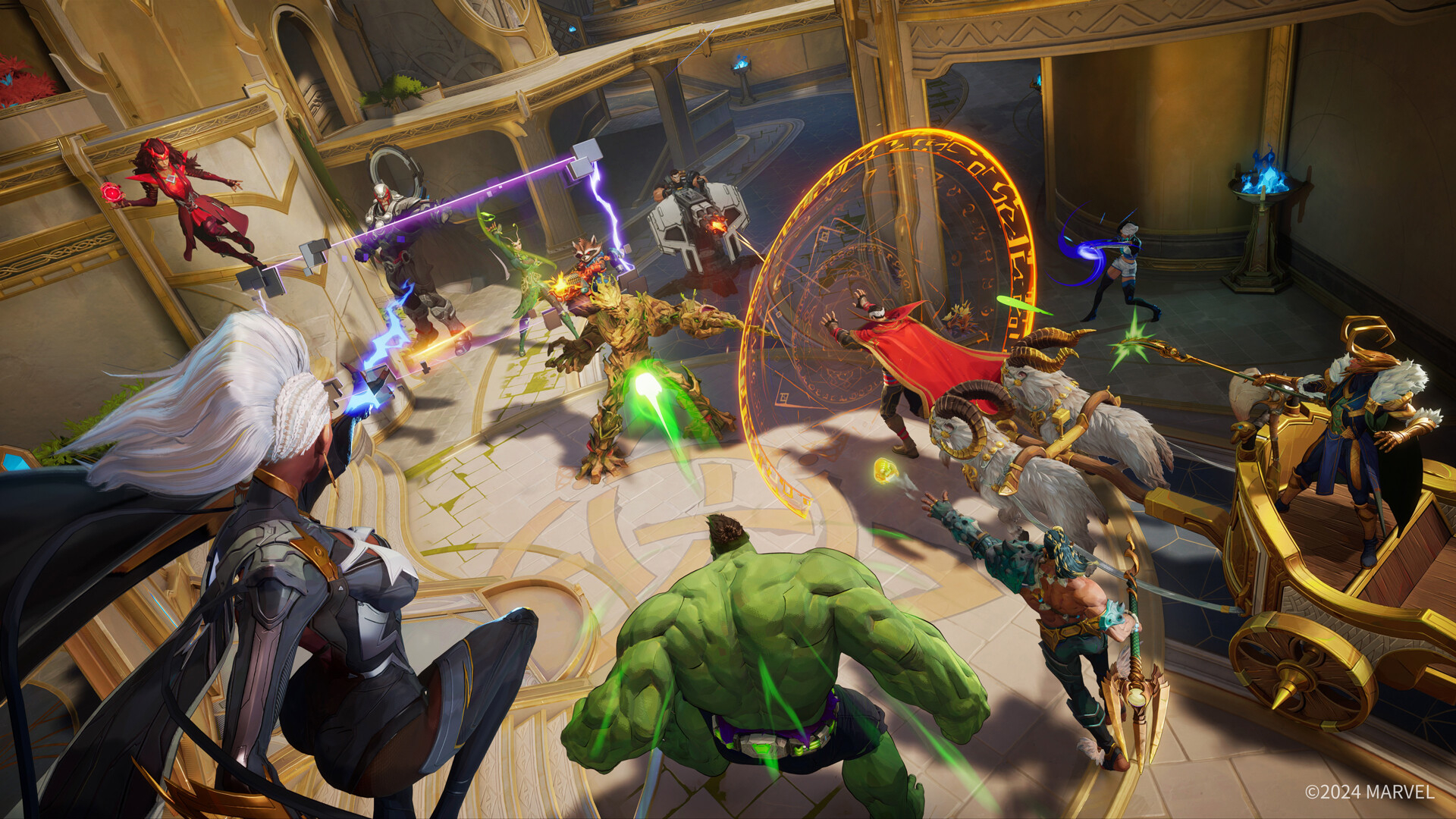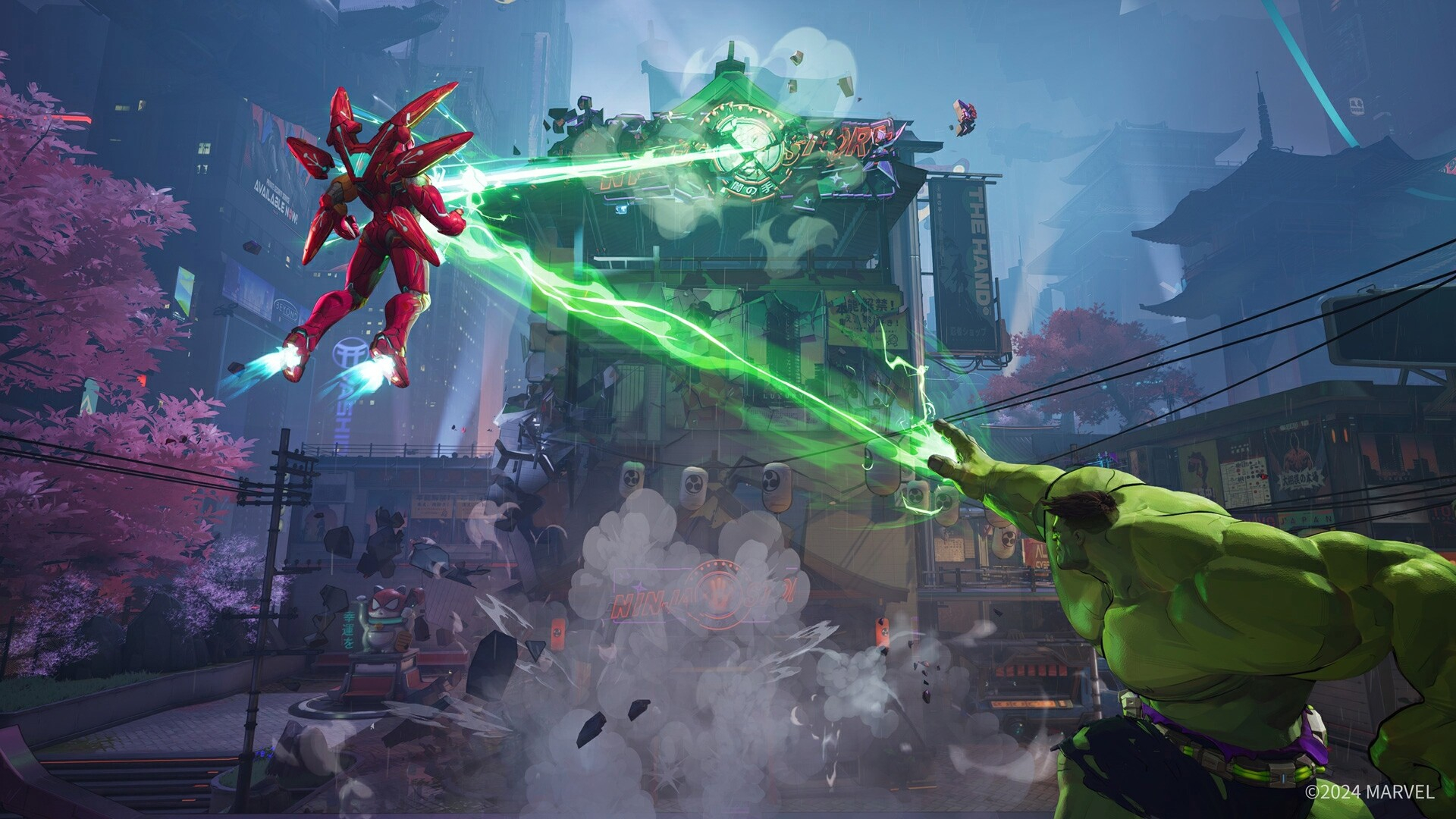In the crowded landscape of online hero shooters, developer NetEase i Marvel Rivals maybe you can achieve what Sony i Agreement couldn’t: create a real one Overwatch compete.
Of course, in a market dominated by Blizzard’s decade-long track record of success, there are still plenty of titles competing to take its place. Apex Legends has had a lot of success in this field, especially in Asia, while Valve has recently gained popularity by allowing it to fuel online speculation Deadlockbeta. NetEase faces a more uphill battle. The Marvel name may have some clout, but alpha and beta testing show that the initial intrigue surrounding the IP’s hero shooter has blossomed into real excitement.
But can this pre-launch interest translate into a large base of dedicated players? A few days before Tokyo Game Show 2024, I had the opportunity to sit down with the developers to discuss their design philosophy and any development challenges they faced.
With great power

(Image: NetEase Games/Marvel)
“We can only succeed through our own specialization in this important genre,” explains Guangyun Chen, lead game designer Marvel Rivals. “We define ourselves as a superhero PVP game, so we want to provide an authentic superhero experience where you play and act like those heroes. (To keep the game engaging), we will have evolving seasons and new stories that will introduce new heroes, new hero combo abilities, changes to some maps, and perhaps even gameplay changes. We want to make sure the player can constantly experience new things and feel refreshed.”
Although many Marvel Rivals is exactly what you would expect from the genre, with two teams of heroes fighting for objectives on different maps, and the skills of these heroes are where the team hopes to set their game apart from the competition. Many characters have powers that allow them to traverse the environment and even fly. Finding cover is dynamic with a destructible environment that ensures no two games will be exactly the same. Team-building abilities occur when allied heroes (such as Spider characters) are selected together, providing unique attacks that can provide an advantage to well-coordinated teams.
If multiverse superhero movies themselves sometimes get bogged down in their own story, the team wants to use it to expand and give purpose to each battle. They’ve created their own multiverse that gives them the freedom to use variations of characters that wouldn’t be seen in the comics and delve into some of the lesser-known types in the lineup.
The recently revealed Psylocke was a character chosen for her exceptional katana skills and agility. Her design is based on Peach Momoko’s comical interpretation of the character, and the artist was even asked to further work on the overall look.
Psylocke in new faces

(Photo: Marvel)
When it comes to creating new characters, the team insisted that the idea was to keep everything fun, diverse, and visually interesting. As Chen explains, “we are a matchmaking game, so our top priority is to make sure our champions add momentum to the game. But beyond that, we choose heroes for two reasons: because they are popular and people will know them, like your Spider-Man or Captain America. Then we want to include heroes that will be lesser known, that will have their own specializations and that can show the diversity of this universe.
“We also choose voice actors based on how we design these characters. Spider-Man already has a renowned voice actor in Yuri Lowenthal, so we had no hesitation in inviting him to voice the character. When it comes to heroes that have a more diverse presence in the game, or that are primarily found in formats like comics rather than other media like Psylocke, we take a different approach. She and I wanted to find someone who could speak both Japanese and English. We’re even going beyond the game itself and thinking about how fans can interact with the voice actors, such as how they can be present at events like Comic Con.”
The more we talked, the more the team emphasized esports and focused on more casual elements. The goal is to ensure that all audiences have fun, not just the highest level, which makes sense. Beyond the ubiquity of these characters, who are more likely to attract casual players, no game can base its success solely on competitive fame. Overwatch found an audience even though his ambitious esports plans consistently failed, and Fortnite is bigger than ever, even though its competitive scene has shrunk.
“We have a statistical model that helps us deal with the balancing problem. So each character has a base number of power and skill settings. We’ll do plenty of testing to see if these numbers need to be adjusted, and we even have different types of testing. We ran tests to check the balance for beginner players, and we also ran tests where our team included very good players who had played with professional players, so we knew what would happen when professional players played with these settings. Based on this, we will adjust the base numbers to finally achieve a balance between each hero to give everyone the best balance and time during the game.
Technical awareness

(Image: NetEase Games/Marvel)
Talking to the technical team later in our session, I really appreciated how much work had gone into innovating technically and bringing something new to the genre. It took a lot of trial and error to provide a fully disruptive environment that synchronized precisely between online players.
As Weikang Ruan, lead technical designer of the game, says: “we had to split the disruptive environments into two parts (to make sure they would work even with high latencies). To recognize whether a section of a building has been destroyed and may be under attack, the first part of the recognition system is performed entirely on the client.
“In the case of small elements, such as windows and doors, they are recognized and destroyed completely on the client side, so the server cannot deal with it and limits data transfer. In other areas, if we destroy part of a wall and there is now a hole in that wall, the server only needs to know whether that element is present or not and synchronize that data, while the actual destruction effect occurs locally (by simplifying the way the server recognizes destruction in the client), we worked to make sure it would sync perfectly even with pings over 100, so it should be good for all players.”
Optimizing for the S Series was a huge challenge for us
Weikang Ruan, Chief Technical Designer
Combined with the challenge of harnessing powers like Doctor Strange, who can fire projectiles through the portals he creates throughout the level, this places a heavy technical burden on the hardware. The team noticed particular balancing challenges for the Xbox Series S console due to lower GPU power and lower memory.
As Ruan says: “Optimizing for Series S was a huge challenge for us, and we heard the same from many other developers. Destructible environments increase memory usage significantly, including around 200-300 MB, which may seem small but is a real challenge for the hardware. However, it is a popular device and sets us a lower benchmark for next-gen development to adapt our game that will provide better performance to the player.
Will be Marvel Rivals stick around? Perhaps if the constant addition of new heroes and changing seasons keep the experience constantly fresh. With this in mind, the first obstacle to the success of live services has been removed. People listen, they get excited, and the game is fun.
This is where the fun begins…